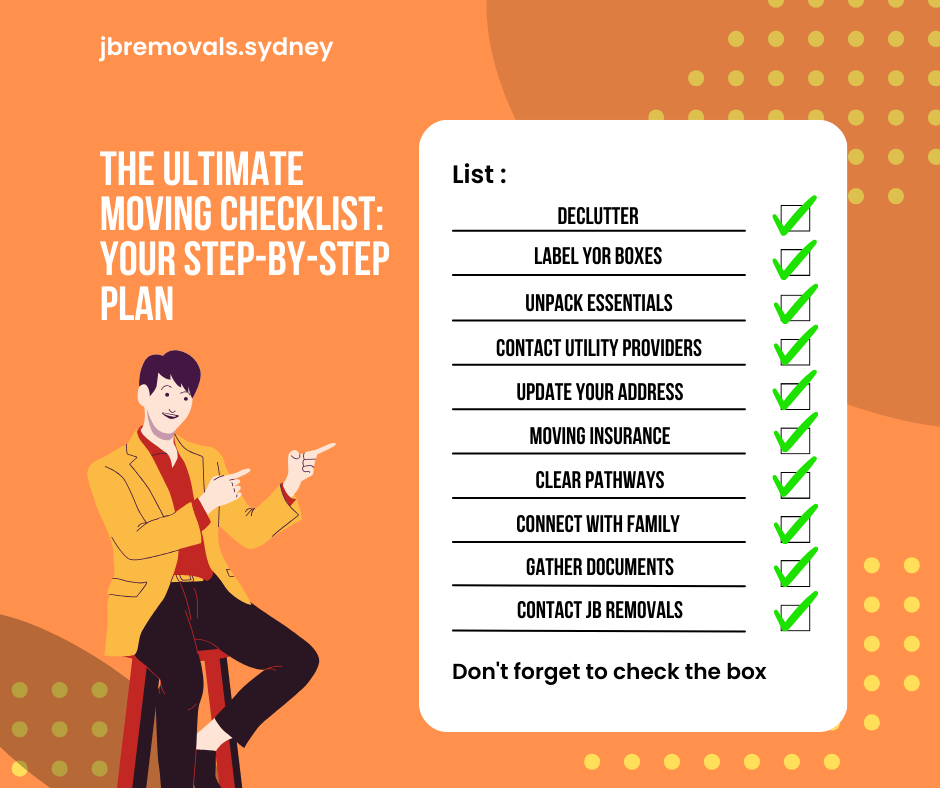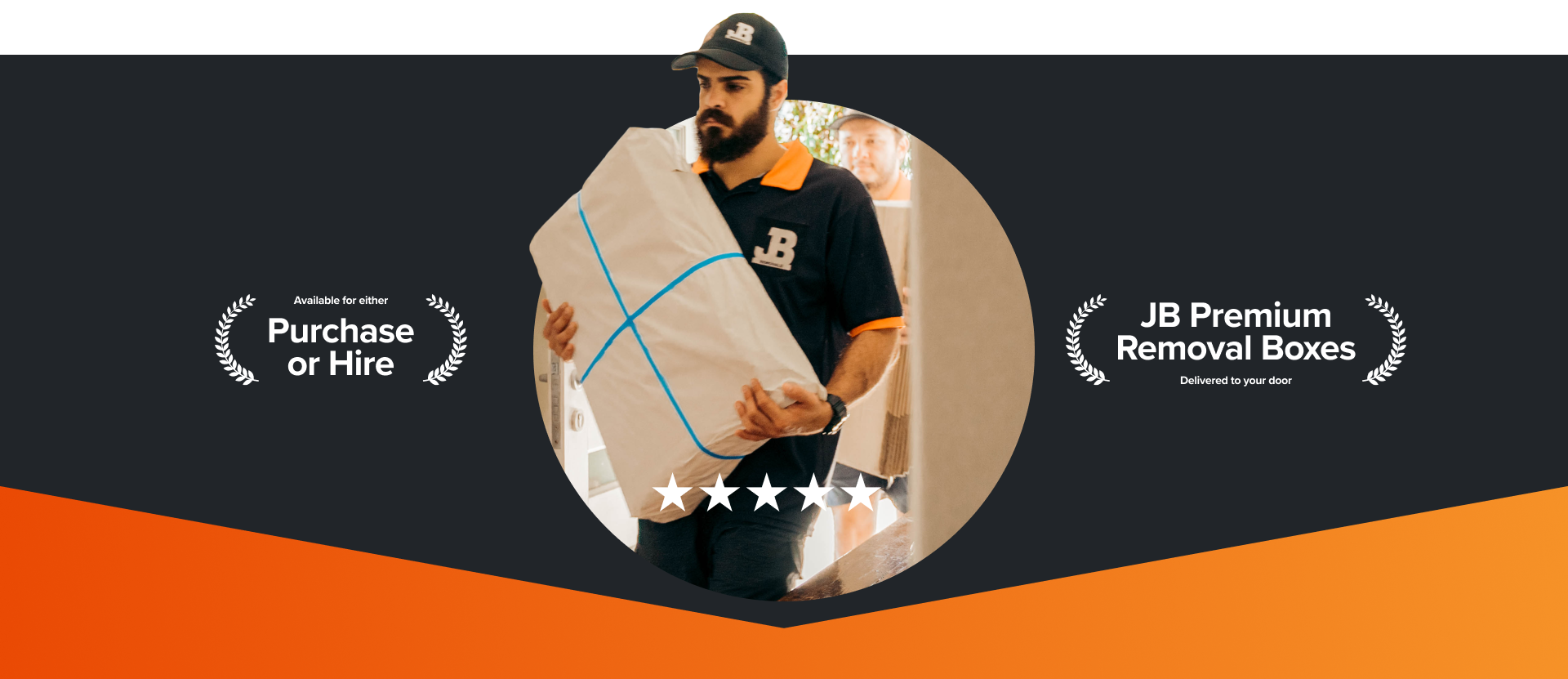

Moving can be a daunting and overwhelming task, but with the right plan in place, you can tackle the process with ease and efficiency. Whether you’re relocating to a new home across town or across the country, having a comprehensive moving checklist can make all the difference. In this article, we’ll guide you through each step of the moving process, providing essential questions, answers, and facts to ensure a smooth transition to your new abode.

Answer: Ideally, you should start planning your move and create your moving checklist about 8 to 12 weeks before your moving date. This will give you enough time to organise all the necessary tasks and avoid last-minute stress.
Facts: Research indicates that early planning can significantly reduce moving-related stress and ensure a more efficient moving experience.
Answer: Begin by creating a detailed moving checklist that outlines all the tasks you need to accomplish. This will act as your guiding map throughout the entire moving process.
Facts: Studies show that individuals who use checklists are more likely to complete tasks on time and experience fewer instances of forgetfulness during a move.
Answer: As part of your Moving Checklist, start by decluttering your belongings. Organise belongings into groups: items to keep, items to donate, and items to discard. This will help reduce the number of items you need to pack and make your new space feel more organised.
Facts: The National Association of Professional Organisers reports that the average person spends one year of their life looking for lost items. Organised packing can significantly reduce this wasted time.
Answer: Gather essential packing supplies such as cardboard boxes, packing tape, bubble wrap, packing paper, and markers for labelling.
Facts: According to the Environmental Protection Agency (EPA), cardboard boxes make up a significant portion of landfill waste. Consider using eco-friendly moving boxes or reusing boxes to reduce your environmental impact.
Answer: Label your boxes clearly with the room they belong to and a brief description of their contents. This will simplify the unpacking process significantly.
Facts: The American Moving and Storage Association states that labelling boxes properly can save up to 40% of unpacking time.
Answer: The decision depends on factors such as your budget, the distance of the move, and the amount of belongings you have. Professional movers can save you time and effort, but DIY moving can be more cost-effective.
Facts: The American Moving and Storage Association estimates that the average cost of an intrastate professional household move is around $2,300, while the cost of an interstate move can exceed $4,300.
Answer: Start by unpacking essential items like toiletries, bedding, and kitchen essentials. Subsequently, proceed methodically through each room.
Facts: A study published in the “Personality and Social Psychology Bulletin” suggests that an organised living space can positively impact mood and well-being.
Answer: Change the locks, update your address with the post office, and familiarise yourself with the local area. This approach will aid in your adjustment and help you feel more at ease in your new environment.
Facts: The U.S. Postal Service processed over 38 million address changes in 2019, highlighting the importance of updating your address promptly.
Answer: Contact utility providers well in advance to schedule the transfer or setup of services like electricity, water, gas, internet, and cable. This ensures that you have essential services ready when you move in.
Facts: According to the U.S. Energy Information Administration, electricity and natural gas are the two most common energy sources for households, highlighting the importance of setting up these services promptly.
Answer: Update your address with important institutions like banks, insurance companies, healthcare providers, and government agencies. This prevents any disruption in services and ensures that important communications reach you at your new address.
Facts: The Federal Trade Commission recommends updating your address with financial institutions promptly to prevent issues like missed bills or identity theft.
Answer: Consider purchasing moving insurance to protect your belongings in case of any accidents or damages during transit. Some moving companies offer insurance options, or you can explore third-party providers.
Facts: The Federal Motor Carrier Safety Administration (FMCSA) requires interstate movers to offer two types of liability options, Full Value Protection and Released Value, to protect your belongings during a move.
Answer: Keep pathways clear to prevent tripping hazards, especially when movers are carrying heavy items. If you have pets or small children, consider arranging for them to stay with friends or family to avoid accidents during the hectic moving process.
Facts: The National Safety Council highlights the importance of maintaining a safe environment during moves to prevent injuries, particularly when heavy furniture and boxes are being transported.
Answer: Recognise that moving can be emotionally challenging. Stay connected with friends and family, maintain your routines as much as possible, and give yourself breaks to relax and unwind during the moving process.
Facts: The American Psychological Association suggests that acknowledging and managing stress during a move is crucial for both mental and physical well-being.
Answer: Personalise your space by unpacking cherished items, decorating with familiar pieces, and setting up your belongings in a way that reflects your style. Exploring your new neighbourhood and engaging in local activities can also help you settle in and create a sense of belonging.
Facts: Studies from the University of California, Berkeley, indicate that personalising your living space can lead to increased levels of happiness and well-being.
Answer: Instead of throwing away items you no longer need, consider donating, recycling, or selling them. This approach not only minimises waste but also provides assistance to those in need.
Facts: The Environmental Protection Agency estimates that recycling one ton of cardboard can save over 9 cubic yards of landfill space.
Answer: Opt for sustainable packing materials, such as biodegradable packing peanuts, recycled paper, or reusable plastic bins. Also, try to consolidate trips to minimise fuel consumption if you’re moving locally.
Facts: The World Wildlife Fund reports that reducing plastic waste is essential for protecting marine ecosystems and wildlife.
Answer: Gather essential documents such as passports, birth certificates, medical records, and financial paperwork. Keep them in a secure and easily accessible folder to avoid misplacing them during the move.
Facts: The Federal Trade Commission recommends keeping sensitive documents with you during a move to prevent identity theft or loss.
Answer: Contact your children’s schools to arrange for the transfer of academic records. This ensures a smooth transition for your children’s education.
Facts: The U.S. Department of Education emphasises the importance of timely transfer of school records to minimise disruption to a student’s learning.
Answer: Reflect on your moving process, noting what went well and what could be improved. Use this knowledge to make future moves even smoother.
Facts: A study conducted by the University of Texas at Austin found that reflective thinking enhances problem-solving skills and decision-making.
Answer: Join local clubs, attend community events, and introduce yourself to neighbours to establish a social network in your new location.
Facts: The American Psychological Association states that social connections play a vital role in reducing stress and promoting well-being.
Moving is a multifaceted journey encompassing practical, emotional, and environmental considerations. Through meticulous planning, effective organisation, and a positive mindset, the overwhelming task of moving can evolve into a rewarding experience.
At every stage, from preparation to settling in, you have the chance to streamline tasks, reduce stress, and leave a positive impact. The comprehensive checklist is your guiding companion, empowering you to confidently navigate the entire process.
Balancing emotional well-being alongside logistics is key. Acknowledging and addressing the emotional aspects of moving contributes to overall mental health.
The environmental aspect is equally significant. By adopting eco-friendly practices, like reducing waste and using sustainable materials, you contribute to the environment and set an example for responsible behaviour.
Embrace the opportunity to explore and connect with your new community, creating a space that truly reflects you. Every move is a chance for growth and a fresh start.
Whether moving near or far, this comprehensive checklist enables a smooth transition. By addressing each aspect thoughtfully, challenges can be transformed into the excitement of a new beginning. Approach this transformative journey with enthusiasm and embrace the possibilities ahead!
Chat with our team – 📞1300 820 861
